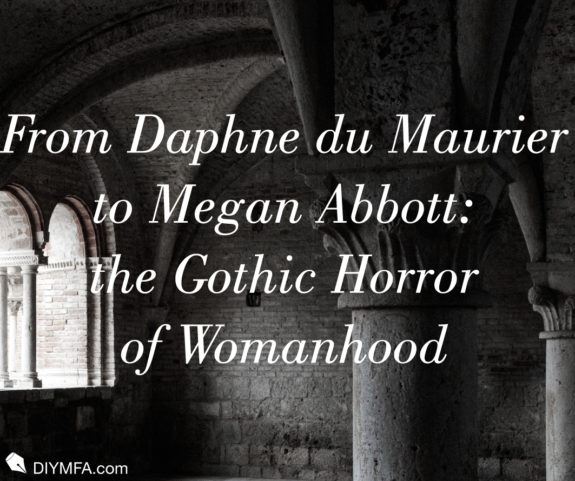Anyone who loves mysteries and thrillers should have at least a passing acquaintance with the great Daphne du Maurier. I know this, because my own acquaintance with her was extremely passing until recently, despite a personal connection. (Rebecca is one of my mother’s favorite books and my younger brother was almost named Max. My oldest son is named Max.) I am ashamed to say I only read Rebecca when it was assigned for school when I was fifteen. I did want to read it, so I was happy and actually finished it. (Sorry to any of my former teachers reading this.) But I have now reread Rebecca and read du Maurier’s novels Jamaica Inn and My Cousin Rachel, as well as one of her short story collections Don’t Look Now and Other Stories. I was missing out and am officially obsessed with her.
Daphne du Maurier
Rebecca is du Maurier’s most famous and by most estimations best novel. It was published in 1938 and won the National Book Award for Fiction. The 1940 film adaptation was Alfred Hitchcock’s American debut and won the Oscar for Best Picture. In 2000, Rebecca won an Anthony Award (awards named for mystery writer Anthony Boucher) for Best Novel of the Century. Two of her short stories inspired the films Don’t Look Now and The Birds, another famous Alfred Hitchcock film. Du Maurier herself was made a Dame Commander of the Order of the British empire.
Despite being known as a romantic suspense author, a vein of psychological horror runs through du Maurier’s stories. She was ahead of her time in many ways. She wrote about some very dark themes, such as adultery, revenge, murder, and incest. To me, the most fascinating of her psychological horror involves the relationships between women and the different ways they confront societal expectations of females.
Megan Abbott
Megan Abbott, one of my favorite modern authors, is an authorial daughter of du Maurier in this respect. Every one of her books explores the theme of the darkness in female relationships. Abbott has publicly stated her admiration of du Maurier, recommending her books and giving her birthday shout-outs on Twitter. (If you haven’t checked out Abbott’s Twitter, do it now. It’s so noir and old Hollywood.) The dreamy noir atmosphere of Abbott’s books, particularly Dare Me (now a great show on USA), would fit as well at Manderley as in a 21st century American high school.
Wait, what?
A Tale of Two Gothic Prologues
Yes, my fellow thriller fans. Du Maurier is a sensational, Gothic, dreamy, dark gem with some seriously twisted, interesting characters. (I can’t go into which characters are twisted and how, because of spoilers.) The dreamy darkness of both authors’ prose is on full display in the prologue of each book. It is a perfect fit for stories of young women coming of age in the modern world. In fact, each prologue shows its main character facing the reality behind the fictions of adulthood peddled to young women.
Daphne du Maurier’s Rebecca
Rebecca is the story of a young woman who marries a mysterious man named Maxim de Winter, owner of a beautiful home called Manderley. The narrator, known only as Mrs. de Winter, despite her “lovely and unusual name,” cannot believe her luck at first. But she soon finds out that Maxim’s first wife Rebecca casts a long shadow, particularly with housekeeper Mrs. Danvers. But not for the reason the new Mrs. thinks. (It is not a spoiler to say that Mrs. Danvers is one of the most deliciously creepy characters ever.)
Rebecca’s prologue recounts Mrs. de Winter’s dream, beginning with the famous line “Last night I dreamt I went to Manderley again.” She passes through the gates as if she has “supernatural powers.” The drive is still “twisting and turning,” but is also “narrow and unkept.” “Stealthy, insidious Nature” with its “long, tenacious fingers” has “triumphed.” The woods are “dark and uncontrolled,” the drive “choked,” and “naked” beech trees twine in a “strange embrace.” The tree roots trip her with their “skeleton claws” and the hydrangeas have become “black and ugly.”
She reaches Manderley. Her eyes “prick” with tears. The site is still a “jewel in the hollow of a hand.” The stone walls boast “perfect symmetry.” Manderley remains “secretive and silent,” but now also a “desolate shell.” Nettles and ivy slowly approach over the lawn, set to obliterate it one day. She tries to remember the way it used to be with the rose garden, the birds, the sea, and the Happy Valley. But a cloud “came upon the moon” and “Manderley was ours no longer. Manderley is no more.”
Megan Abbott’s Dare Me
In Dare Me, Megan Abbott delves into the psyche of teenage girls and the intensity of their relationships. Addy Hanlon, a junior at Sutton Grove High School and varsity cheerleader and her best friend and cheer captain Beth Cassidy have been best friends since second grade. Abbott introduces Colette French, the new cheerleading coach. She takes over Beth’s squad, demoting her from squad captain and Top Girl on the pyramid, and mesmerizes Addy, leaving Beth behind as the Mrs. Danvers of the group. Like “Danny,” Beth fights to keep what she has, not caring who she hurts in the process. But French is the boss and does not acknowledge rivals.
In the Prologue, Addy approaches a scene where a “bad thing” has happened. The sense of dreamy dread is strong, “The air is heavy, misted, fine.” There is a silver intercom button, a “buzzing” and “vibrating” in the building. Excerpts of the conversation that lured Addy to this glowing, dark place comprise the first line and pop up intermittently in italics, making the voice sound ghostly.
“Something happened, Addy. I think you better come.”
“Hurry, please.”
After Addy leaves the elevator with the “incandescent” buttons, she plunges into darkness. In the apartment, there is only “one floor lamp coning halogen” in the corner. (I love Abbott’s use of unusual verbs.)
The vestibule “seeps” into the dining room. The table is a “puddle of ink.” The couch becomes a black beetle in her mind. She sees hair glinting on the carpet. She sees more.
But we don’t. Not yet. Just like we don’t know what happened to Manderley, we don’t know what Addy is facing, just that it is bad and her companion cannot face it at all.
Each narrator must run a gauntlet, confronting something she has lost. We know where each will end up but not how she got there. The evil at the center of it all is hovering, but not revealed. These two women both walk a dark path to witness the destruction of something they cherish.
More than romance, more than the tribulations of the teen years, Rebecca and Dare Me are about women and the dark, secret complexities of their relationships. This time around, the relationship between Rebecca and Mrs. de Winter dominated the book for me. Like Beth and Addy, the world labels, predicts, and demands things of the two women in relation to each other. Housekeepers and cheerleading coaches use them to hurt each other. You’ll have to read the books (or watch Dare Me and the new Rebecca adaptation with Lily James and Armie Hammer that is due out this year) to find out if the antagonists succeed.

Sara Farmer lives in Austin, TX, with her husband, three kids, and two cats. When she’s not chasing kids and cats, she reads and writes mysteries. You can find her at www.kittymomma.com and on Twitter @avonlea79.







